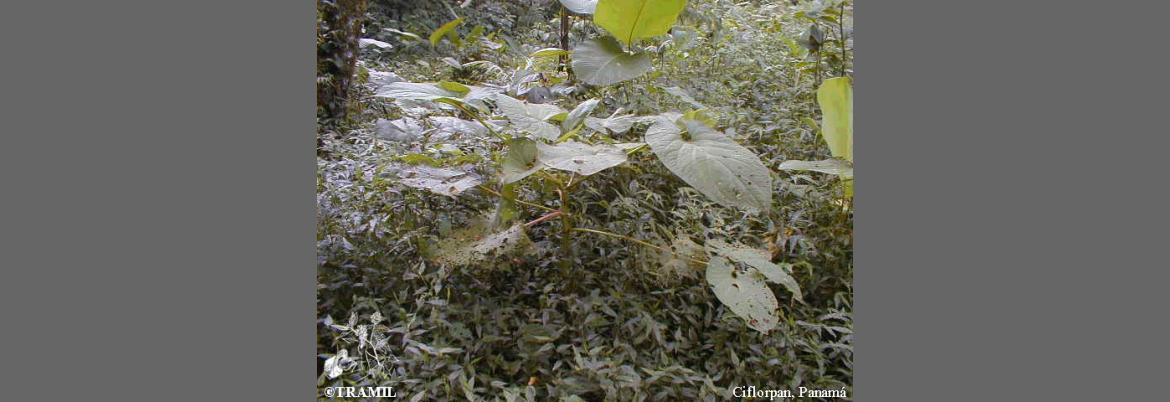1 GIRON L, 1988 Encuesta TRAMIL (Costa atlántica). Centro Mesoamericano de Tecnología CEMAT, Guatemala, Guatemala.
2 HANSEL R, LEUSCHKE A, 1975 Aporphine-type alkaloids fromPiper auritum. Lloydia 38(6):529-530.
3 DOMINGUEZ XA, ROJAS P, GARZA MDR, CORDOVA JA, 1962 Preliminary study of 25 plants from the central territory of Quintana Roo, Mexico. Rev Soc Quim Mex 6:213-215.
4 OSCAR CC, POVEDA ALJ, 1983 Piper auritum (H.B.K.), Piperaceae family. Preliminary study of the essential oil from its leaves. Ing Cienc Quim 7(1-2):24-25.
5 GUPTA M, 1987 Essential oil: a new source of bee repellents. Chem Ind (London) 5:161-163.
6 AMPOFO SA, ROUSSIS V, WIEMER DF, 1987 New prenylated phenolics fromPiper auritum. Phytochemistry 26(8):2367-2370.
7 DUKE JA, ATCHLEY AA, 1986 Handbook of proximate analysis tables of higher plants. Boca Raton, USA: CRC Press.
8 FENG PC, HAYNES LJ, MAGNUS KE, PLIMMER JR, SHERRAT HS, 1962 Pharmacological screening of some West Indian medicinal plants. J Pharm Pharmacol 14:556-561.
9 SETH G, KOKATE CK, VARMA KC, 1976 Effect of essential oil of Cymbopogon citratus Stapf. on central nervous system. Indian J Exp Biol 14(3):370-371.
10 RAO VS, MENEZES AM, VIANA GS, 1990 Effect of myrcene on nociception in mice. J Pharm Pharmacol 42(12):877-878.
11 GarcIa GM, Coto MT, GonzAlez CS, Pazos L, 2000 Toxicidad aguda en ratones, del extracto acuoso de hojas frescas de Piper auritum. Informe TRAMIL. Laboratorio de Ensayos Biológicos LEBI, Escuela de Medicina, Universidad de Costa Rica, San Pedro, Costa Rica.
12 BETANCOURT J, MARTINEZ MJ, LOPEZ M, MOREJON Z, BOUCOURT E, MORON F, 2000 Actividad genotóxica in vivo de hoja seca de Piper auritum H.B.K. en el test de micronúcleos de medula ósea de ratón. Informe TRAMIL. Laboratorio Central de Farmacología, Fac. C. Médicas “Dr. S. Allende”, Ciudad Habana, Cuba.
13 GUERRA MJ, BETANCOURT J, LOPEZ M, MOREJON Z, BOUCOURT E, FUENTES V, 2001 Genotoxicidad in vitro: mediante el sistema de ensayo con Aspergillus nidulans de decocción liofilizada de hojas frescas de Piper auritum. Informe TRAMIL. Laboratorio Central de Farmacología. Facultad de Medicina Dr. Salvador Allende, Ciudad de La Habana, Cuba.
14 GUERRA MJ, LOPEZ M, BOUCOURT E, FUENTES V, 2002 Toxicidad aguda (DL50) de la decocción liofilizada de hojas frescas de Piper auritum.Informe TRAMIL. Laboratorio Central de Farmacología. Facultad de Medicina Dr. Salvador Allende. Ciudad de La Habana, Cuba.
15 GUERRA MJ, LOPEZ M, BOUCOURT E, FUENTES V, 2002 Toxicidad aguda (DL50) del extracto hidroalcohólico (45%) de hojas secas de Piper auritum.Informe TRAMIL. Laboratorio Central de Farmacología. Facultad de Medicina Dr. Salvador Allende. Ciudad de La Habana, Cuba.
16 GUERRA MJ, LOPEZ M, BOUCOURT E, FUENTES V, MORON F, 2002 Clases tóxicas agudas de extracto hidroalcohólico (30%) de hojas secas de Piper auritum.Informe TRAMIL. Laboratorio Central de Farmacología. Facultad de Medicina Dr. Salvador Allende. Ciudad de La Habana, Cuba.
17 CECIL, RUSELL LA FAYETTE, 1987 Compendio de medicina interna. Madrid, España: Ed. Interamericana.
18 DUKE JA, 1988 Handbook of medicinal herbs. Boca Raton, USA: CRC Press.
19 PILOTO FERRER J, VIZOSO A, RAMOS A, GARCIA A, REMIGIO A, VEGA Y, GONZALEZ ML, RODRIGUEZ C, CARBALLO C, 2009 Plantas medicinales. Diez años de evaluaciones toxicogenéticas en el CIDEM. Boletín Latinoamericano y del Caribe de Plantas Medicinales y Aromáticas, 8(5):428-434.
20 MOREJON Z, LOPEZ M, GARCIA MJ, BOUCOURT E, VICTORIA M, FUENTES V, MORON F, BOULOGNE I, ROBINEAU L, 2009 Encuesta TRAMIL preliminar a grupos de vecinos en los municipios 10 de Octubre, Lisa, Marianao, Habana del Este (Cojímar) en la Ciudad de la Habana. Laboratorio Central de Farmacología, Universidad de Ciencias Médicas de La Habana, Ciudad de La Habana, Cuba.










